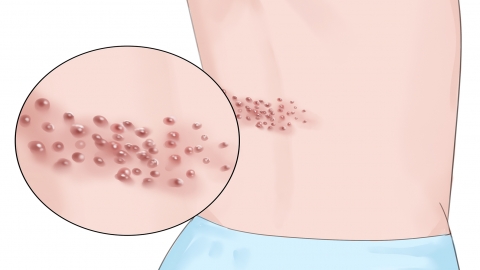What are the differences between Herpes Simplex Virus Type 1 and Type 2?
Generally, herpes simplex virus type 1 (HSV-1) and type 2 (HSV-2), although both belonging to the Herpesviridae family, differ significantly in common infection sites, primary transmission routes, typical symptoms, initial infection populations, and latency sites. Detailed analysis is as follows:

1. Common Infection Sites: HSV-1 primarily affects the lips and surrounding facial areas, commonly involving regions such as the corners of the mouth, lip margins, and oral mucosa, where blisters easily form during outbreaks. HSV-2 mainly infects the genital and anal areas, with blisters predominantly concentrated in the urogenital region and rarely affecting the face.
2. Primary Transmission Routes: HSV-1 is mainly transmitted through close daily contact, such as sharing eating utensils, cups, kissing, or contacting blister exudate from infected individuals. HSV-2 is primarily transmitted through sexual contact; unprotected sexual activity is the main transmission method, though in rare cases, it may also spread indirectly through contact with contaminated towels or clothing.
3. Typical Symptoms: During HSV-1 outbreaks, the infected area initially experiences mild burning or itching sensations, followed by clusters of small blisters. After the blisters rupture, superficial erosions develop, accompanied by mild pain. HSV-2 outbreaks cause more pronounced genital pain, with blisters easily rupturing to form ulcers, possibly accompanied by painful urination.
4. Initial Infection Population: Initial HSV-1 infection typically occurs during childhood or adolescence; for example, children may become infected through shared meals or kissing after contacting family members carrying the virus. Initial HSV-2 infection mainly affects sexually active individuals, usually occurring after initial sexual contact with an infected person.
5. Latency Sites: After HSV-1 infection, the virus remains latent in the trigeminal ganglion. When immunity declines, the virus reactivates within the trigeminal ganglion and spreads along nerves to the face, causing symptoms. HSV-2 remains latent in the sacral ganglia, reactivating and traveling along nerves to the genital area, resulting in localized symptom outbreaks.
It is recommended to maintain good personal hygiene, avoid sharing personal items with individuals experiencing herpes outbreaks, maintain regular sleep patterns, engage in appropriate exercise, strengthen immunity, reduce the likelihood of viral activation and recurrence, and promote skin and mucosal health.




